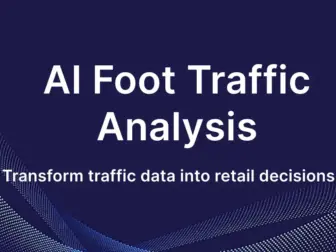Tag - Edge AI
AI and Machine Learning, Blog , December 2, 2025 , Computer Vision, Edge AI, embedded AI, Gesture Recognition, Landmark Detection, MediaPipe, Model Quantization, RK3566, RKNN, Rockchip
AIoT SaaS Platform, Blog, Retail IoT , November 10, 2025 , Computer Vision, Customer Experience, data-driven retail, Edge AI, in-store analytics, ROI optimization, Smart Retail, store optimization
AI and Machine Learning, Blog , October 31, 2025 , AIoT, Edge AI, IoT video stream, real-time transmission, RTSP, smart camera, video protocol, WebRTC
Blog, Edge Computing and Data Analytics , October 14, 2025 , Computer Vision, Deep Learning, Edge AI, Inference, Model Deployment, NPU, RK3566, RKNN Toolkit, YOLOv8
AI and Machine Learning, Blog , August 1, 2025 , AI + Hardware, AI Agent, AIoT, Edge AI, EMQX, IoT protocols, MCP Server, MQTT, Smart Control
AI and Machine Learning, Blog , June 19, 2025 , ASR, Audio Streaming, Custom Model, Edge AI, Industry AI, Real-Time Speech, SenseVoice, Speech Recognition, Voice AI, WebRTC
Blog, IoT Tools and Platforms , May 7, 2025 , Edge AI, embedded development, lightweight server, network protocol, open-source project, RTP, RTSP, Rust, streaming, video encoding
Blog, Embedded System Development , March 12, 2025 , AI Costs, AI Deployment, AI hardware, Cloud AI, Edge AI, IoT Devices, Model Optimization, Smart Hardware, Voice Interaction
- 1
- 2
Unveiling the Power of Edge AI: Harnessing Smart Technology Closer to the Source
Unveiling the Power of Edge AI: Harnessing Smart Technology Closer to the Source
Edge AI, or Edge Artificial Intelligence, represents a transformative approach to processing data where the AI algorithms are deployed on local devices at the “edge” of the network, closer to the source of data such as sensors or IoT devices, rather than relying on cloud-based services. This paradigm shift is driven by the tremendous growth of data generated by devices at the network’s periphery and the need for real-time processing and decision-making in many applications.
The allure of Edge AI lies in its ability to deliver several key benefits. Firstly, it significantly reduces latency by processing data on the spot, without the need to send it back and forth to a distant cloud server. This is critical for applications requiring immediate action, such as autonomous vehicles or industrial robotics, where split-second decisions can be the difference between smooth operation and catastrophic failure.
Another advantage of Edge AI is the reduction in bandwidth requirements. By handling data processing locally, only relevant information or decisions need to be sent over the network, which can be essential in environments with limited connectivity or where transferring large volumes of data is not practical or cost-effective.
Privacy and security also see a marked improvement with Edge AI. When data is processed locally, sensitive information does not have to traverse the internet or reside on remote servers, reducing the risk of interception or unauthorized access. This is particularly important for compliance with privacy regulations and for applications dealing with confidential data.
Edge AI also brings the promise of greater reliability. Devices can operate independently of the network, ensuring functionality even when connectivity is intermittent or unavailable. This is especially vital for critical applications in remote locations or in circumstances where network failure is simply not an option.
Despite these benefits, Edge AI does come with challenges. One of the main hurdles is the limited processing power available on edge devices compared to cloud data centers. This necessitates the development of highly optimized AI models that maintain high performance despite constrained resources.
Another challenge is the management and maintenance of AI models across potentially thousands of devices. Ensuring that each device is running the latest, most efficient model requires robust deployment and update mechanisms. Furthermore, the distributed nature of Edge AI means that robust security measures must be in place to guard against threats at numerous points in the network.
As Edge AI continues to evolve, it is becoming increasingly sophisticated through the integration of advanced technologies such as 5G and specialized hardware accelerators. These advancements are enhancing the capabilities of edge devices, enabling them to perform more complex AI tasks with greater speed and efficiency.
In conclusion, Edge AI is poised to revolutionize the way we process data and make decisions. By bringing computation closer to the data source, Edge AI opens up new possibilities for speed, efficiency, privacy, and reliability. As technology advances and the challenges are addressed, it is likely that Edge AI will become an integral part of our digital landscape, powering everything from smart cities to personalized healthcare, and beyond.







